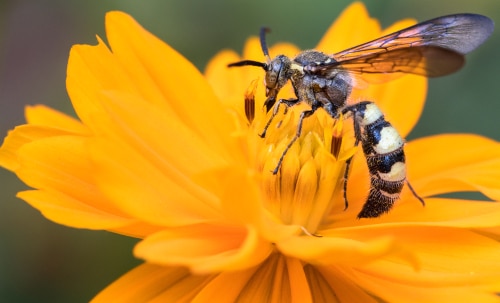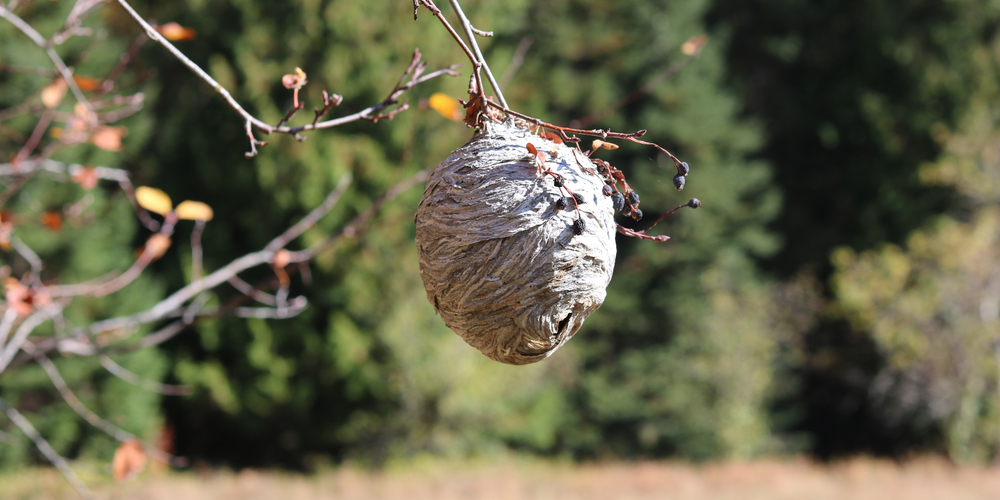The “Quick Answer” Section
| Question | Are Wasps Pollinators? |
|---|---|
| Answer | Yes, But Less Effective Than Bees |
| More Info | Wasps are pollinators, but they are not as efficient or focused as bees because their bodies are less hairy and therefore carry less pollen between flowers. Additionally, wasps are more carnivorous, often seeking out other insects for food. However, they do visit flowers for nectar and inadvertently pollinate them in the process. Their role in pollination is more incidental than intentional, contributing to biodiversity and the ecosystem. |
Intro to In-Depth Guide on Wasps and Pollination
When you think about pollinators, bees might be the first creatures that come to mind. Yet, you may be surprised to learn that wasps, too, play a role in pollination.
Although wasps are often recognized for their role as predators in controlling pest populations, their contribution to pollination is often overlooked.
Like bees, wasps visit flowers to forage for nectar, and, in the process, they transport pollen from one flower to another.
Wasps’ involvement in pollination varies across different species. Many flowers depend on the activity of wasps for successful pollination.
In your garden, you are likely to observe several types of wasps among the plants, some of which benefit your flowers without drawing much attention to their work.
Their body structure, behavior, and the way they interact with plants differ from bees, leading to various methods and efficiency of pollination.
Wasp Species and Pollination Roles
Before exploring the role wasps play in pollination, it’s crucial for you to know that multiple wasp species contribute differently to ecosystems, each with unique behaviors that aid in plant fertilization.
Types of Wasps Commonly Recognized as Pollinators
Various species of wasps, each with a distinctive role, partake in pollination. Among them:
- Fig Wasps act as the exclusive pollinators for fig trees, with a specialized mutualistic relationship where each is dependent on the other for survival.
- Paper Wasps, known for their paper-like nests, inadvertently collect pollen as they forage for nectar, contributing to cross-pollination.
- Mud Dauber Wasps, although more solitary, also participate in the transfer of pollen, particularly when visiting flowers for nectar to fuel their flight.
Pollination by wasps occurs as they move between plants, contributing to the biodiversity and health of the ecosystem.
Specific Pollination Behaviors of Wasps
While wasps lack the fuzzy bodies typical of bees, they have their own methodical tactics in pollination:
- They mainly seek out nectar, with pollen transfer happening accidentally as they move from flower to flower.
- Social Wasps, such as yellow jackets, carry out opportunistic pollination, a byproduct of their frequent commutes for resources like nectar and prey.
- Solitary Wasps often visit flowers with exposed nectaries, and while their focus isn’t on pollen, their body contact with flowers results in pollination.
Your understanding of wasps’ pollination behaviors highlights these insects’ uncelebrated but significant role in our ecology.
Learn more about the pollination strategies of wasps.
Why Keep Wasps Around
You may not always notice them, but wasps play a significant role in maintaining the balance and health of ecosystems.
Contribution to Biodiversity
Wasps contribute to biodiversity through their roles as predators, parasitoids, and pollinators. They help regulate populations of arthropods, which in turn supports the stability of food webs.
Social wasps, such as yellowjackets and hornets, actively control pest species by hunting them to feed their young.
Solitary wasps, on the other hand, often lay their eggs directly onto or into other insects, providing a crucial check on those populations.
Benefits to Agriculture
In agriculture, wasps offer critical services by pollinating crops and managing pest populations.
Their actions lead to healthy plant communities and abundant harvests.
It’s been assessed that the economic value of pollination services by insects, wasps included, is sizable, contributing importantly to the agriculture industry.
Wasps visit a variety of plants, thereby ensuring pollination services vital for both natural and cultivated ecosystems.
Comparison of Wasps with Other Pollinators
As you seek to understand the garden’s bustling activity, it’s key to note that wasps, while less renowned than bees, are participants in pollination. Their contributions, though differing in nuances, are integral to the vitality of ecosystems.
Similarities with Bee Pollination
Both wasps and bees play a role in the transfer of pollen between flowers, which is essential for plant reproduction.
Like bees, wasps visit flowers to consume nectar, and during this process, they inadvertently collect pollen on their bodies.
This pollen is then transferred to other flowers, fostering cross-fertilization.
Differences in Pollination Efficacy
Wasps differ from bees in their lack of specialized structures for carrying pollen, such as the pollen baskets found on bees’ legs.
Consequently, wasps are not as efficient as bees in pollinating plants.
Pollination is often a byproduct of their search for nectar, not a targeted activity, unlike in bees which both collect nectar and purposefully gather pollen.
These differences in pollination efficacy are crucial to understand the varying impacts these insects have on plant life.
Frequently Asked Questions
In exploring the valuable roles that wasps play within our ecosystems, it’s important to understand their contributions to pollination and how this compares with other pollinators like bees.
Do wasps participate in the pollination of plants as significantly as bees?
While bees are more renowned pollinators, wasps also positively impact pollination.
Wasps, especially social species, play a non-negligible role by transferring pollen as they move from plant to plant in search of food.
Are all species of wasps involved in pollination activities?
Not all wasp species are involved in pollination. Some wasps, like fig wasps, are specialized pollinators, while others may contribute incidentally to pollination.
What role do yellow jacket wasps play in the pollination process?
Yellow jacket wasps are not as efficient as bees when it comes to pollination, since they do not have structures to carry pollen. However, they may still inadvertently aid in pollination while they forage for food.
How do paper wasps contribute to the pollination of plants?
Paper wasps assist in the pollination of plants by visiting flowers for nectar and, in the process, end up spreading pollen. They can be particularly effective in pollinating flowers in your garden.
Can wasps aid in the pollination of vegetable crops?
Wasps can aid in the pollination of vegetable crops, although their contribution is not as well-documented or as significant as that of bees. They may pollinate plants while seeking nectar or preying on other insects.
How might ecosystems be impacted by the absence of wasps?
The absence of wasps from ecosystems would lead to a decrease in predation of pest insects.
It could potentially affect pollination dynamics, especially in plants for which they are primary pollinators, such as figs.
Last update on 2025-06-06 / Affiliate links / Images from Amazon Product Advertising API




